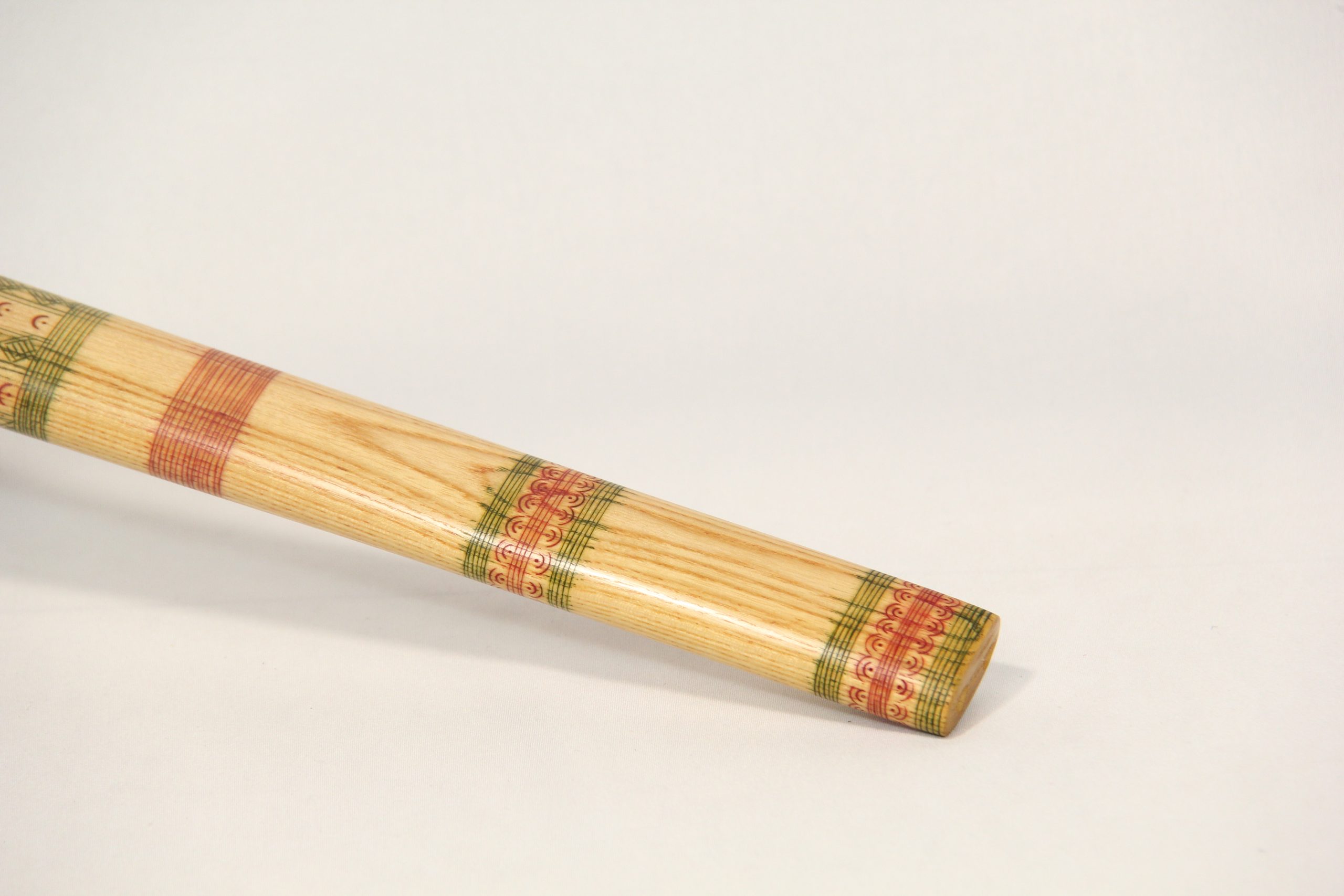Double Fluier
Romanian Flutes in Duke’s Musical Instrument Collection
On August 29, 2007, Romanian-American scholar Iona Sherman delivered DUMIC’s new Romanian instruments made by Ion Costache. The instruments include a double fluier, a large fluier, three small fluiers, a caval, a pai, and an ocarina. Costache is well known for crafting wind instruments mainly used by shepherd’s.
Most of Costache’s instruments are made of ash wood, since this type of wood flourishes in the Southern region. Two of the fluiers in the collection are made of plum wood. The ocarina is made from clay not far from his village. All the instruments were crafted in his home. He has a small storage room outside of the yard where he shapes and bores the instruments. His bedroom makeshifts as a work room in which he shapes the block, fingerholes, decorates, paints, and stores the instruments.
20th century Romanian Flute Maker – IOn Costache
Born on June 15, 1933, Ion Costache became interested in music at the age of ten when he heard many of the other boys in his village playing fluiers and ocarinas. Costache wanted to play the fluier, but he was very poor and could not afford an instrument. He realized that the only way to acquire an instrument would be by learning to make it himself. Although Costache never had the opportunity to go to school, he became an apprentice to a village artisan and learned to make fluiers, cavals, and ocarinas. By the time Costache was sixteen he had mastered the art of constructing these instruments and began making a name for himself as a vendor at the weekly village fair.
With the rise of Communism and the formation of formal ensembles in the late 1960s, Costache’s instruments grew in demand. He was hired to supply instruments for school children and ensembles that were practicing at the local cultural center and competing nationally. In 1999 lon Costache was invited to participate in the Smithsonian Folk Festival in Washington D.C. to sell and demonstrate his instruments. Costache considers this event the highlight of his career. Today Costache continues to work from his home in Merisani and holds contracts with the Museum of the Romanian Peasant and the Village Museum in Bucharest.
Fluier – The Romanian 6 Hole Pipe
The fluier is a blown instrument made of thin (normally wooden) tube with several holes.
The Double Fluier, or Fluier Gemanat, is a twin flute made from one piece of wood. Twin flutes, or double flutes, have parallel pipes that are connected with a single duct.
Fluier themselves come in various sizes with the largest known as the fluier mare or caval and the smallest known as the fluieras or trisca. The common fluier is the equivalent to the Irish tin whistle, but made out of wood with the lower aperture of reduced diameter. These are found all over the Balkans.
Generally if the pipe has six finger holes these are equally spaced for small pipes, and in two sets of three for larger pipes. This gives rise to a diatonic scale not conforming to the western tempered scale, but which sounds correct when playing the traditional tunes. (“Fluier – the Romanian 6 Hole Pipe | the Eliznik Pages” 2018)


Sources
- Duke University Musical Instrument Collection Files, Ion Costache.
“Fluier – the Romanian 6 Hole Pipe | the Eliznik Pages.” 2018. Eliznik.org.uk. 2018. https://eliznik.org.uk/traditions-in-romania/traditional-music/pipes/fluier-the-romanian-6-hole-pipe/.





